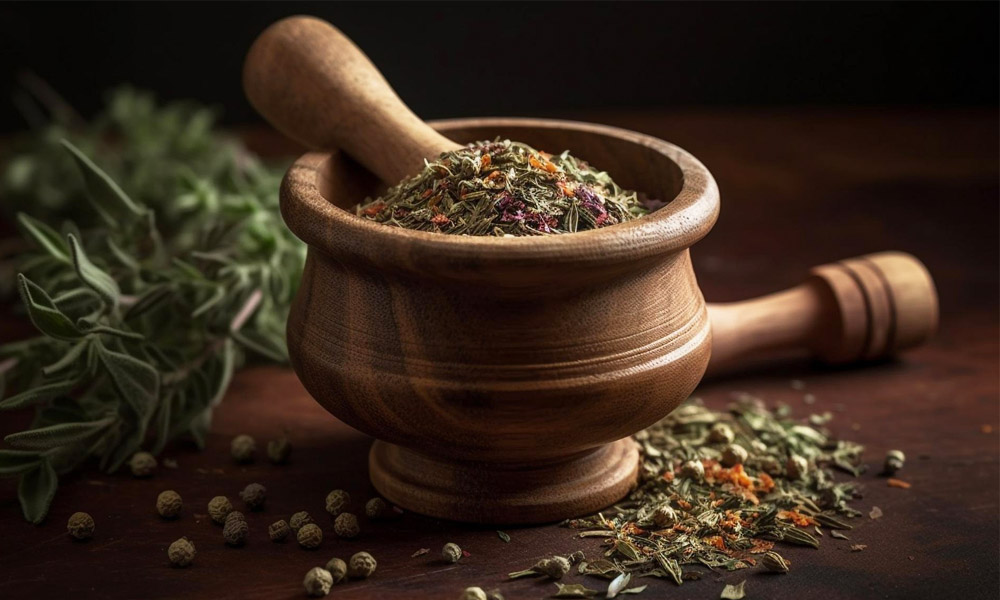Blog
Foenegriek: The Complete Guide to This Powerful Herb
Published
4 months agoon
By
Mr Henry
Have you ever heard of foenegriek and wondered why so many people are talking about it? This ancient herb, also called fenugreek, has been used for thousands of years in cooking and natural medicine. It comes from the Mediterranean region and parts of Asia, where it has always been known for its strong flavor and amazing health benefits.
Today, foenegriek is more popular than ever. From improving digestion to helping with blood sugar levels, this herb is loved by both chefs and health experts. In this guide, we will explore everything about foenegriek — where it comes from, why it’s so healthy, and how you can use it in your daily life. Let’s dive in and see why this little seed is such a big deal.
What is Foenegriek?
Foenegriek is a small plant with tiny yellow-brown seeds that have a slightly bitter, nutty taste. People have used it for centuries in traditional medicine systems like Ayurveda in India and Chinese medicine. It is not just a spice; it’s also known for its natural healing properties.
Think of foenegriek as both a kitchen hero and a home remedy. In many countries, it’s added to curries, breads, and spice blends like garam masala. At the same time, it’s taken as tea or capsules to improve health. Isn’t it amazing how one plant can do so many things?
The Foenegriek Plant
The scientific name of foenegriek is Trigonella foenum-graecum, but don’t worry about remembering that! It’s a small green plant that usually grows up to 60 cm tall. It has three small green leaves, pretty white flowers, and long pods that hold its famous seeds.
This plant loves warm, sunny places. That’s why it grows so well in countries like India, Morocco, and Egypt. Farmers harvest the seeds once they are fully mature and dry them before sending them to markets. If you’ve ever cooked with Indian spices, there’s a good chance you’ve already tasted foenegriek.
Nutritional Value of Foenegriek Seeds
These seeds are not just about flavor — they are full of good nutrients. A small handful of foenegriek seeds contains protein, fiber, iron, magnesium, and manganese. These nutrients help your body stay strong and healthy. For example, the high fiber in these seeds can make digestion smoother and slow down sugar absorption.
The seeds also have special plant compounds like saponins and alkaloids. These natural chemicals are known to help with things like cholesterol and hormone balance. It’s like nature’s own little health booster packed into one tiny seed.
Top Health Benefits of Foenegriek
One of the reasons foenegriek is loved around the world is because of its health benefits. It can help with digestion by reducing bloating and making bowel movements regular. Many people also use it to keep their blood sugar levels stable, which is helpful for those with type 2 diabetes.
Foenegriek is also good for your heart. It can help lower bad cholesterol (LDL) and improve good cholesterol (HDL). For breastfeeding mothers, it is a natural way to increase milk supply. On top of all this, its antioxidants can calm inflammation and help with joint pain. It even makes you feel full for longer, which is great if you are trying to manage your weight.
Traditional Uses of Foenegriek in Natural Medicine
Long before science studied herbs, people already trusted foenegriek as a natural healer. In Ayurveda, this herb is called a “warming” spice. It’s believed to improve energy, balance hormones, and even help with reproductive health. Many Ayurvedic recipes include foenegriek for boosting overall wellness.
In Chinese medicine, it’s known for improving kidney health and reducing back pain. The ancient Egyptians also used foenegriek to reduce fever and help with childbirth. In Europe, people made poultices with its seeds to calm muscle pain and swelling. Isn’t it fascinating how this small herb is used in so many cultures?
Foenegriek in the Modern World
In 2025, foenegriek is everywhere — from kitchen shelves to wellness shops. You can buy it as seeds, powder, capsules, or even liquid extracts. Athletes use it in supplements to boost energy and strength. It is also added to skincare and haircare products because of its anti-inflammatory powers.
The best part is that it’s so easy to use. Whether you sprinkle it in your cooking or take it as a capsule, foenegriek fits right into modern life. It’s like a bridge between ancient tradition and modern science.
Culinary Uses of Foenegriek
If you love cooking, foenegriek is a must-try spice. The seeds are often roasted to make them less bitter and more fragrant. They add a rich, earthy flavor to curries, lentil dishes, and even pickles. In Indian cooking, it’s also used in spice mixes like garam masala.
The leaves of the plant, known as methi, are just as tasty. You can use them fresh or dried in flatbreads, vegetable dishes, or stews. Imagine making a warm methi paratha (flatbread) with a cup of tea — that’s comfort food at its best! By adding foenegriek to your meals, you get both flavor and health benefits in one go.
Side Effects and Safety Considerations
Even though foenegriek is natural, it’s still important to use it wisely. Taking too much can lead to mild stomach issues like bloating or gas. Some people even notice a sweet, maple syrup-like smell in their sweat and urine — this is normal but can be surprising!
Pregnant women should be extra careful because foenegriek can cause uterine contractions. People who are allergic to peanuts or chickpeas might also be allergic to it since they are from the same plant family. The best advice? Start with small amounts and see how your body reacts.
What the Science Says About Foenegriek
Modern science is catching up with what ancient cultures already knew about foenegriek. Research has shown that its seeds can help control blood sugar levels. This is because the natural fiber and plant compounds slow down how fast sugar enters your blood. For people with type 2 diabetes, this can make a real difference.
Studies also show that foenegriek may help lower bad cholesterol and improve good cholesterol, which is great for heart health. Some tests have even found that it might help men with low testosterone feel stronger and more energetic. While scientists are still studying these effects, the results so far are very promising.
Another big reason foenegriek is getting attention is because of its antioxidants. These are powerful compounds that fight inflammation and protect your body from harmful damage. This could mean less joint pain and a lower risk of certain diseases in the long run.
Where to Buy
Foenegriek is easy to find these days. You can buy it at most health food stores, spice shops, or even in big supermarkets. It’s also available online, where you can find seeds, powders, teas, and capsules.
When you buy foenegriek, look for products that are certified organic and non-GMO. This ensures that they are clean, pure, and free of harmful chemicals. Reading customer reviews can also help you pick a good brand.
If you are buying supplements, choose trusted companies that clearly list their ingredients. Quality matters a lot when it comes to herbs, so make sure you are getting the real thing.
Growing Foenegriek at Home
Wouldn’t it be nice to have fresh foenegriek leaves right from your garden? The good news is that this plant is very easy to grow. It needs a sunny spot and well-drained soil. Just plant the seeds, water them lightly, and watch them grow.
In just 3 to 4 weeks, you can start picking the tender green leaves. If you want seeds, let the plant grow for about 3 months until the pods are ready. Growing your own foenegriek means you’ll always have fresh and chemical-free herbs at home.
Even if you live in an apartment, you can grow it in small pots or containers. It’s perfect for people who love gardening but don’t have much space.
Common Myths About Foenegriek
There are some myths about foenegriek that can confuse people. One common myth is that it instantly boosts testosterone. While it can help over time, it doesn’t work like magic. It needs regular use and results can vary from person to person.
Another myth is that natural herbs like foenegriek have no side effects. This is not true. Even though it’s natural, taking too much can upset your stomach or cause other problems.
Some people believe that “more is better” when using herbs, but this is a mistake. Using the right amount is always safer and more effective.
Real User Experiences
People around the world share their positive experiences with foenegriek. Some say it has improved their digestion and reduced bloating. Others mention that they feel more energetic after adding it to their daily routine.
Breastfeeding mothers often talk about how it has helped increase their milk supply naturally. Men who take foenegriek supplements sometimes report better strength and stamina.
Of course, not everyone likes the taste or smell of foenegriek. That’s why many prefer capsules or teas, which are easier to take. But overall, the feedback from users is very encouraging.
Bottom-Line
Foenegriek is one of those herbs that truly stand the test of time. It has been used for centuries to support health, and now modern science is confirming many of its benefits. From improving digestion to balancing hormones and supporting heart health, this herb has a lot to offer.
The best part is that it’s easy to add to your life. You can cook with it, make a simple tea, or take it as a supplement. Just remember to use it in moderation and consult a healthcare professional if you are unsure.
If you are looking for a natural way to improve your health while enjoying new flavors in your meals, foenegriek is definitely worth a try.
(FAQs)
Can foenegriek really change body odor?
Yes! Regular use of foenegriek can make your sweat and urine smell like maple syrup due to a compound called sotolon.
Is foenegriek safe for pregnant women?
No, large amounts can trigger uterine contractions and may lead to miscarriage. Pregnant women should avoid it unless advised by a doctor.
Can foenegriek lower blood sugar too much?
Yes, if taken with diabetes medication, it can cause dangerous drops in blood sugar. Always check with a doctor first.
Does foenegriek really boost testosterone?
Some studies suggest it can increase testosterone, but only with regular use — it’s not an instant effect.
Can eating too much foenegriek harm you?
Yes, overuse can cause severe diarrhea, nausea, or allergic reactions. More is not always better with this herb.
People also read:

From Pocket to Desk: How Branded Ballpoint Pens Keep Your Business in Hand

Structurespy Com: The Smart Way to Explore Engineering and Architecture

How to Find Elenas Website TheSoundsTour

Who Is adamfoss999? The Online Name Everyone’s Talking About

What Is 73deb40? The Mysterious Code Everyone’s Talking About

What Is p13x13t? The Mysterious Code Everyone’s Talking About

What Is the Best Bra for Sweating? Stay Cool and Comfortable

Blazertje: The Stylish Little Blazer Everyone’s Wearing in 2025

What Is Acamento? The Beautiful Art of Finishing Things Right

I Don’t Like Plastic Windows: 5 Modern uPVC Myths Busted

Who Is Kate Garraway New Partner? The Truth Revealed

Brandi Raines Net Worth 2025: Age, Bio, Career, Husband and Children

Betsy Grunch Net Worth 2025: Salary, Career, Husband, and Life Story

Salma Shah Biography: Age, Career, Net Worth, Husband and Children

Sophia Wenzler Biography: Age, Date of Birth, Husband, Career Story, and Net Worth

Kay Crewdson Biography: Age, Date Of Birth, Husband, Children, and Net Worth

Nomia Iqbal Biography: Age, Husband, Career, Net Worth and BBC Journey

Mike Danson Biography: Age, Net Worth, Wife, Children and Full Story

Ági Barsi’s Untold Story: Sister Of Judith Barsi And Her Battle With Cancer

Who Is Nigel Rosser? All About Isabel Oakeshott’s Ex-Husband

From Pocket to Desk: How Branded Ballpoint Pens Keep Your Business in Hand

Structurespy Com: The Smart Way to Explore Engineering and Architecture

How to Find Elenas Website TheSoundsTour

Who Is adamfoss999? The Online Name Everyone’s Talking About

What Is 73deb40? The Mysterious Code Everyone’s Talking About

What Is p13x13t? The Mysterious Code Everyone’s Talking About

What Is the Best Bra for Sweating? Stay Cool and Comfortable

Blazertje: The Stylish Little Blazer Everyone’s Wearing in 2025

What Is Acamento? The Beautiful Art of Finishing Things Right

I Don’t Like Plastic Windows: 5 Modern uPVC Myths Busted
Categories
Trending
-

 News2 months ago
News2 months agoWho Is Kate Garraway New Partner? The Truth Revealed
-

 Net Worth7 months ago
Net Worth7 months agoBrandi Raines Net Worth 2025: Age, Bio, Career, Husband and Children
-

 Net Worth7 months ago
Net Worth7 months agoBetsy Grunch Net Worth 2025: Salary, Career, Husband, and Life Story
-

 Biography7 months ago
Biography7 months agoSalma Shah Biography: Age, Career, Net Worth, Husband and Children
